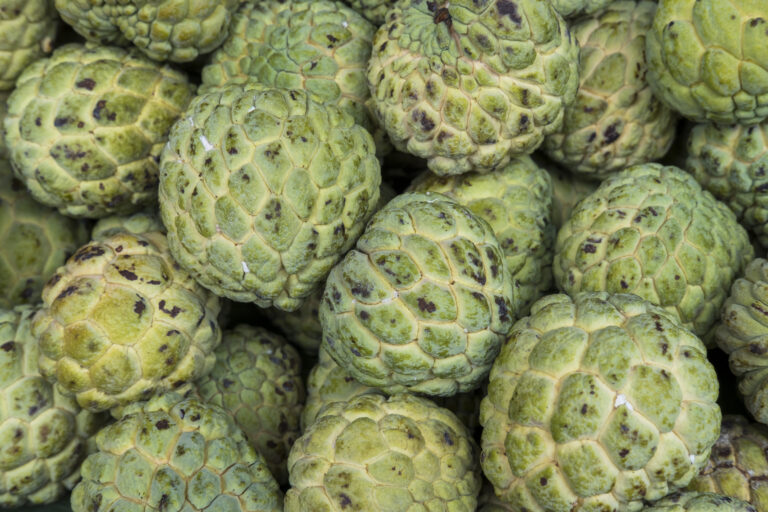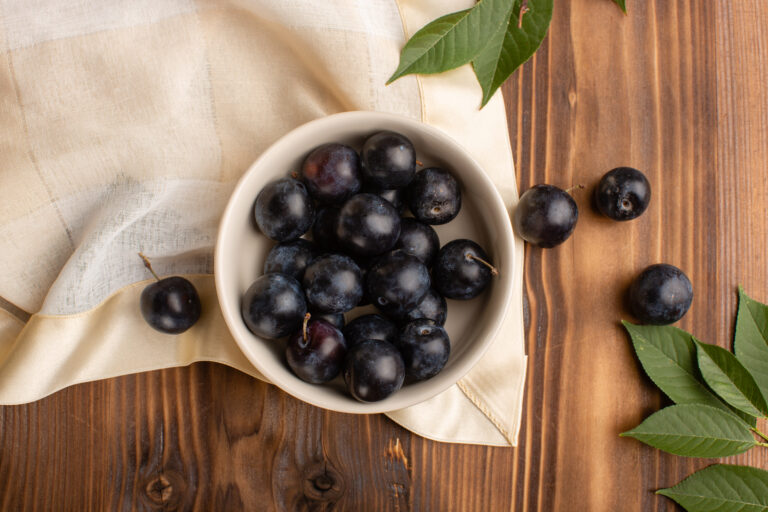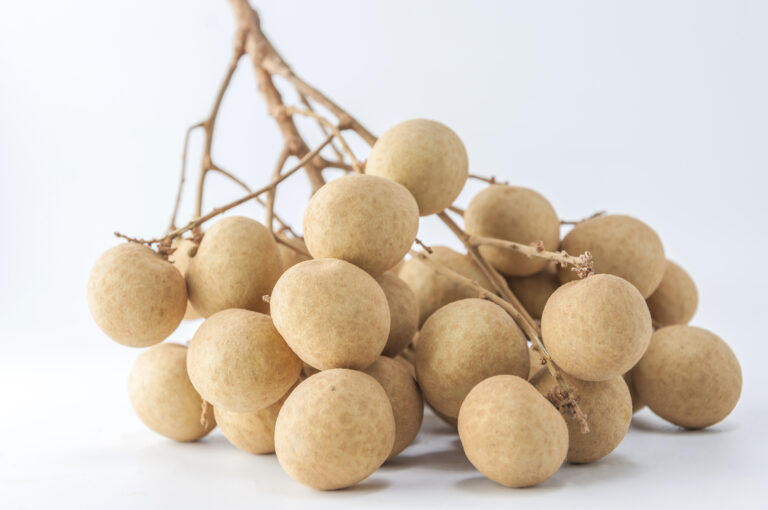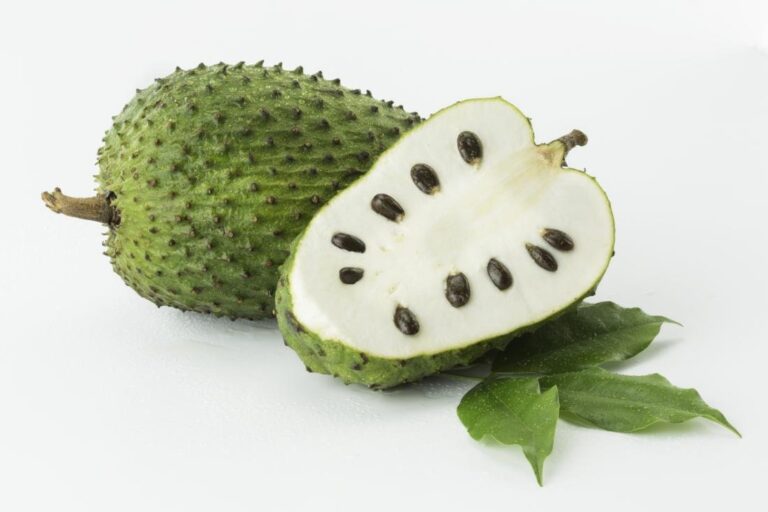What is Cherimoya Fruit?
Cherimoya fruit, scientifically known as Annona cherimola, is a tropical fruit native to South America, specifically the Andes mountain region. Also referred to as “custard apple” or “ice cream fruit,” the cherimoya is renowned for its unique combination of flavors and creamy texture.
Physical Characteristics:
- Appearance: Cherimoya fruit has a distinctive appearance with green, scaly skin. The surface may have a bumpy texture, and the fruit is usually heart-shaped or oval.
- Size: The size of cherimoya varies, but it generally ranges from 4 to 8 inches in diameter.
- Flesh: The creamy white flesh is the highlight of the cherimoya, known for its smooth, custard-like texture and a sweet, tropical flavor. The taste is a delightful combination of pineapple, banana, papaya, and strawberry.
The flavor profile of cherimoya is a delightful mix of sweet and slightly tangy notes, reminiscent of a blend of pineapple, banana, and strawberry. Some even describe hints of vanilla or pear in its taste. The flesh contains large, dark brown seeds that are not edible and should be discarded.

Origin Of Cherimoya Fruit
The cherimoya fruit (Annona cherimola) has its origins in the Andes region of South America. It is believed to be native to the inter-Andean valleys of Ecuador, Colombia, and Peru. The fruit has a long history dating back to the Inca civilization, where it was highly prized for its delicious taste and nutritional value.
Cherimoya cultivation has expanded beyond its South American origins, and it is now grown in various tropical and subtropical regions around the world. Introduced to other parts of the globe by Spanish and Portuguese explorers, the cherimoya adapted well to different climates, leading to its cultivation in countries such as Spain, Italy, Israel, New Zealand, Australia, and parts of Asia.
Today, cherimoya is not only enjoyed in its native South America but has become a globally appreciated tropical fruit. Its adaptation to diverse climates has contributed to its widespread cultivation, making it accessible to people in many parts of the world.
Nutritional Content
Certainly! Here’s a hypothetical breakdown of the nutritional content for a typical cup (about 196 grams) of cherimoya fruit:
- Calories: Approximately 120
- Carbohydrates: 30 grams
- Sugars: 20 grams
- Dietary Fiber: 5 grams
- Protein: 2 grams
- Fat: 0.7 grams
Vitamins:
- Vitamin C: 40 milligrams (about 44% of the recommended daily intake)
- Vitamin A: 30 micrograms (about 3% of the recommended daily intake)
- Folate (Vitamin B9): 15 micrograms (about 4% of the recommended daily intake)
- Vitamin E: 1.5 milligrams (about 8% of the recommended daily intake)
- Vitamin K: 4.5 micrograms (about 4% of the recommended daily intake)
Minerals:
- Potassium: 350 milligrams (about 7% of the recommended daily intake)
- Magnesium: 20 milligrams (about 5% of the recommended daily intake)
It’s important to note that these values are approximate and can vary based on factors such as the specific variety of cherimoya and growing conditions.
Health Benefits Of Cherimoya Fruit
Cherimoya fruit with its rich nutritional profile, offers several health benefits. Here are five potential advantages associated with consuming cherimoya:
1. Nutrient-Rich:
- Cherimoya is packed with essential nutrients, including vitamin C, potassium, dietary fiber, and various B vitamins. These nutrients play crucial roles in supporting overall health, promoting immune function, and aiding in proper digestion.
2. Antioxidant Properties:
- The fruit contains antioxidants such as vitamin C and other polyphenolic compounds. Antioxidants help neutralize free radicals in the body, which may contribute to a lower risk of chronic diseases and support cellular health.
3. Heart Health:
- Cherimoya’s potassium content is beneficial for heart health. Adequate potassium intake is associated with lower blood pressure levels, reducing the risk of cardiovascular diseases. Additionally, the fruit’s fiber content may contribute to maintaining healthy cholesterol levels.
4. Digestive Health:
- The dietary fiber in cherimoya promotes healthy digestion. Fiber bulks up stool, promoting regular bowel movements and preventing constipation. It also supports a healthy gut microbiome, contributing to overall digestive well-being.
5. Immune System Support:
- Cherimoya is a good source of vitamin C, a powerful antioxidant that plays a key role in supporting the immune system. Adequate vitamin C intake is linked to a lower risk of infection and can help the body fight off illnesses.
It’s important to note that while cherimoya offers these potential health benefits, individual responses to dietary choices can vary. As with any food, moderation is key, and cherimoya should be part of a balanced and varied diet to ensure a wide range of nutrients. If you have specific health concerns or conditions, speak with a healthcare professional or a registered dietitian for personalized advice.
I hope you got the answer to your query. Also, check out Specific Carbohydrate Diet.













